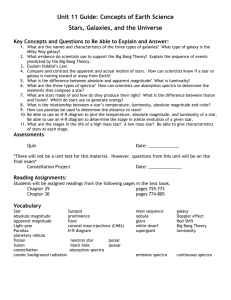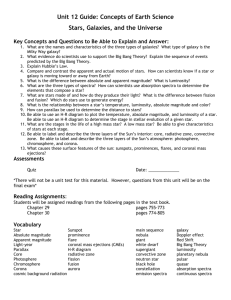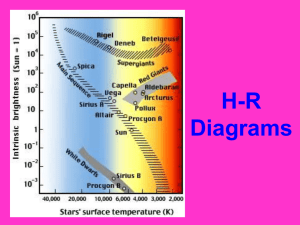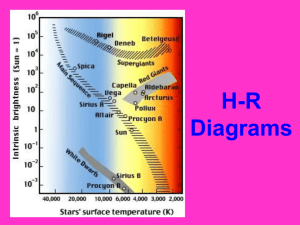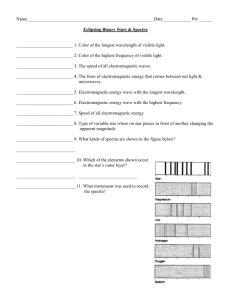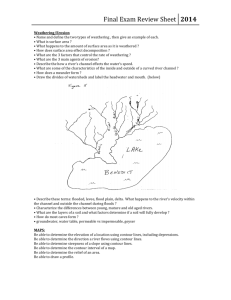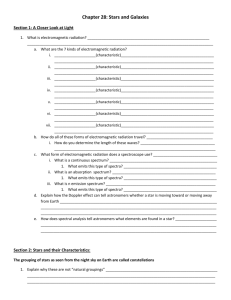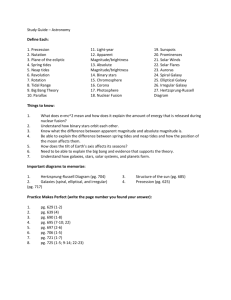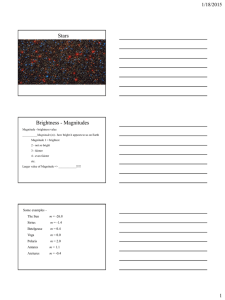Unit 11 Guide: Foundations of Earth Science Stars and Galaxies Key
advertisement
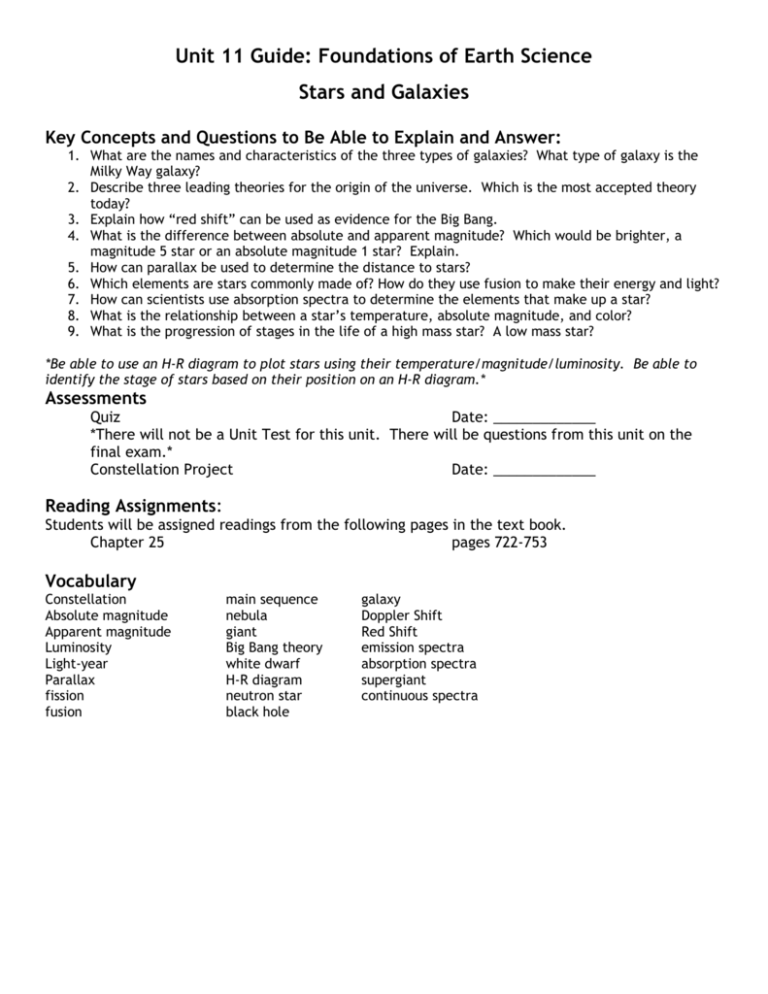
Unit 11 Guide: Foundations of Earth Science Stars and Galaxies Key Concepts and Questions to Be Able to Explain and Answer: 1. What are the names and characteristics of the three types of galaxies? What type of galaxy is the Milky Way galaxy? 2. Describe three leading theories for the origin of the universe. Which is the most accepted theory today? 3. Explain how “red shift” can be used as evidence for the Big Bang. 4. What is the difference between absolute and apparent magnitude? Which would be brighter, a magnitude 5 star or an absolute magnitude 1 star? Explain. 5. How can parallax be used to determine the distance to stars? 6. Which elements are stars commonly made of? How do they use fusion to make their energy and light? 7. How can scientists use absorption spectra to determine the elements that make up a star? 8. What is the relationship between a star’s temperature, absolute magnitude, and color? 9. What is the progression of stages in the life of a high mass star? A low mass star? *Be able to use an H-R diagram to plot stars using their temperature/magnitude/luminosity. Be able to identify the stage of stars based on their position on an H-R diagram.* Assessments Quiz Date: _____________ *There will not be a Unit Test for this unit. There will be questions from this unit on the final exam.* Constellation Project Date: _____________ Reading Assignments: Students will be assigned readings from the following pages in the text book. Chapter 25 pages 722-753 Vocabulary Constellation Absolute magnitude Apparent magnitude Luminosity Light-year Parallax fission fusion main sequence nebula giant Big Bang theory white dwarf H-R diagram neutron star black hole galaxy Doppler Shift Red Shift emission spectra absorption spectra supergiant continuous spectra
